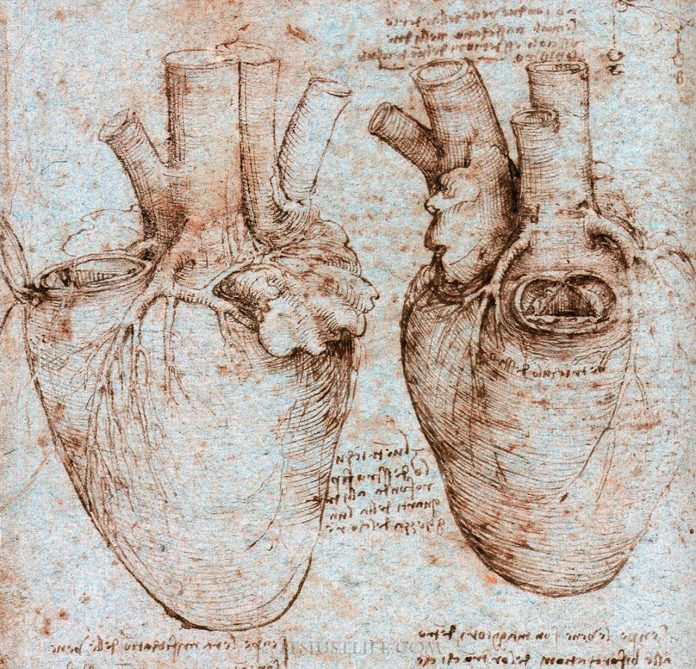As a young girl, I had always been able to ‘feel’ my heart, not just in a physical ‘thump’ way after one of my trampoline marathons, but in a real, innocent and ‘knowing ‘ way – which told me it felt everything around me – all at once. My heart would always know, a split second before I clocked it in my easily distracted, butterfly-like brain.
My ‘heart’ allowed me to know I would always be ‘ok’ no matter what life required of me, in a way that furious over-thinking (exams, study, friendship dilemmas) never could. It felt expanded when I was loving and contracted when I was not. I held this natural ‘heart-centred-ness’ in myself until about the age of 9. Then, by a process of educational moulding and subtle ‘fitting in’, I drifted further away from this self-evident truth, losing connection with my heart by small degrees of movement, so subtle I barely noticed the trail of choices leading me far away.
Fast forward to medical school, and like thousands before me, I was happily embracing the accepted view of human bodies as ‘cranio-centric’. Neuroscience lectures sold us a rosy utopia of human brains as plastic ‘supercomputers’ in miniature, which could ‘mind over matter’ anything in their wake – including pain. Intellectual pride was in every corner of this academic hot-house and not once did it occur to me that my expensive modern education may be deliberately lying to me or worse, deeply harming me. By the time I graduated, I too had ditched the ‘passé’ view that the heart had any relevance to modern man’s future, beyond its ‘pump value’ and its pesky habit of killing millions of the human population each and every year!
Neuroscience and the ‘cranio-centric’ world-view (think Artificial Intelligence and its numerous spin-offs) continue to be sold as the new ‘sexy’ in Science, under exciting new monikers, of course. I too have fallen under this seductive spell. Yet despite all that intellectualism, my body, which did me the honour of carrying my head to all the medical conferences and exams, began to suffer under my cranio-centric regime. Mind over matter simply did not work for me. An inflammatory thyroid condition, migraines, several miscarriages, near constant exhaustion and a variety of neck aches and back pains eventually caused me to STOP and question the teachings.
Assuredly, the unabated epidemic that is ‘heart disease’ continues to be humanity’s number one medical scourge.(1) And yet in total contradiction to that ‘cardio-centric’ fact and the level of harm it speaks, heart-related research is still one of the least attractive research options in modern Medicine. Too hard, too big, too boring.
How did this come about? Could it be that I (and everyone who taught me) were being deliberately misled about the powers of the brain?
A quick google search of the word ‘cardio-centricity’ will take you to a plethora of articles mostly deriding the ‘delusions’ of the ancient Egyptians, Plato and his student Aristotle, for asserting that the heart could be of prime importance to mankind’s well-being and the seat of what the ancients deemed ‘the Soul’.
Yet for the last 30 years, a handful of scientists at the HeartMath Institute and other similar centres, have been steadily amassing a volume of research-based evidence (over 300 peer reviewed articles) that point to exactly that.(2)
Truly inspiring findings have re-emerged:
• Our Heart has a recordable electromagnetic field six times greater than our brain, radiating well outside our physical body, despite it being less than half the size of the brain.
• The heart sends vastly more neural signals to the brain than the brain does to the heart.
• The Heart’s Rate Variability (HRV) and rhythm or wavelike pattern ‘entrains’ or synchronises other physiological rhythms such as breathing, blood pressure and crucially, brainwave cycles.
• The ‘synchronisation effect’ of the Heart’s activity (most evident at 0.04-0.26 Hz) produces a harmonious functioning of the central nervous, hormonal and immune systems termed ‘physiological coherence’, evident during states of appreciation or joy.
Scientists working with HeartMath Institute found that beat-to-beat variation in heart rates were overlooked when average heart rate is measured. But information in these ‘inter-beat intervals’, called heart rate variability (HRV), appears crucial to understanding the Heart’s sensitivity and function as the organ of coherence in the body’s physiology.(2)
HRV is generally higher in the young and is significantly influenced by emotion, repeated stress and feelings. Low HRV is more noticeable in older people, and is associated with a wide range of diseases, disorders and premature mortality.
In other words, our Heart’s innate sensitivity (ability to flexibly adapt) to energetic impulses is key to our true health, well-being and biological ageing process.
Why is this?
In simple terms, the heart’s subtle motion (beat to beat variability) dominates our physiology, unifying the body as a whole. HRV synchronises the body’s major systems (including breathing, brainwaves and autonomic nervous system) into either harmonious (coherent) or disordered (incoherent) patterns depending on its sensitivity to a particular emotional state or feeling.
The evidence that our hearts have a signature ‘optimal’ vibration or frequency that synchronises all the major body systems into a ‘coherent’ or unified state is a key finding that on every level, is hard to ignore.
Or, said another way, such findings indicate that it is HEART over matter, NOT mind over matter that will bring us to true well-being as a species. Are we prepared to listen to this evidence with our ‘hearts’, so to speak? Given the current state of the world, it would seem wise.
The ‘heart-focused’ or cardio-centric concept of medicine is not new. The Edwin Smith and the Ebers papyri, discovered in Thebes in 1862 and scribed around 1550 BCE, indicate the Egyptian physicians had clear understanding of the link between the human heart, the pulse (‘the speaking of the heart’), and its role in various health-related conditions.(3,9)
For the Egyptian physicians and healers (who worked together), the heart was known to be the centre of thought, emotion, and all other nervous function – an organ of such sacredness that it was left in the body during mummification to ensure its availability for judgment during the afterlife. It was thought “capable of recording all the good and evil acts performed by a human being during life.”(4) A kind of energetic or vibrational record of the human spirit’s choices during its incarnation in a body.
Laura M. Zucconi in her paper ‘Medicine and Religion in ancient Egypt’ outlines the Egyptian belief that “The soul of a person was seated in the heart and during the Judgement of the Dead one’s heart was weighed against the Feather of Maat.”(5) The goddess Maat symbolised the concept of universal balance and harmony, incorporating laws of balance, order, and justice. This governed the relationships in and between the mundane, mortal world and the supernatural, divine worlds.(6)
So for ancient Egypt, the heart was not just an anatomical organ. And this was reflected clearly in the language of the day. In ancient Egyptian texts, two words are used for the heart; IB and HATY. IB “implies nuances of ‘internal’, ‘hidden’, ‘invisible’, ‘inner self” whereas HATY, “means literally something like ‘(that) which is in front’, in the sense of ‘outer’ or ‘visible’.”(7)
In other words, just like today, the ancient Egyptians used “heart” both metaphorically and literally – honouring its specific duality of function – in equal measure.
We might say the heart has an esoteric or innermost role (IB); and an exoteric (outermost or physical) one (HATY).
Scholars like Teodor Lekov have noted in ancient Egyptian texts that “when the heart (IB) is not present, the heart (HATY) is lacking too”.(8) This implies a very practical energetic inter-dependence between these two inner/outer, invisible/visible functions of the heart.
Arabic and Greek physicians of the ancient world expanded these teachings which trickled their way into the European Middle Ages; physicians like Galen and Albertus Magnus then attempted to reconcile cardio-centric and competing cranio-centric physiologies. So too, cardio-centricity attracted the attention of many great names of the Renaissance, including Leonardo Da Vinci, Vesalius, Fernel, and Descartes – who arguably rejected its master role with his mind-glorifying dictum: ‘I think therefore I am’. Even by the 17th century it was still taken seriously by medical luminaries such as William Harvey – the ‘father of modern medicine’. After that the trail begins to run rather cold and heart-less!
So, to the present. We are currently in a world-wide enthrall of ‘mind-full-ness’ trends, the renegade offspring of a mind-worshipping culture that places the value of our intelligence and well-being defiantly in the brain. Which may prompt us to ask:
Why do we no longer hear of heart-centric research in the hallowed halls of mainstream medicine? Who does it serve to ignore it?
Does the heart-centric view of life carry a symbolism and scientific truth that is simply too uncomfortable for us to consider, as one humanity?
Why does the cure for our ever-rising number one killer still not interest us that much?
What if we were to revisit that ancient cardio-centric view, armed as we are with ever more subtle instruments for measuring the heart’s movements, energetic impulses and magnetic fields?
What would that mean for those of us firmly aligned to and invested in the mind-centric culture that makes Modern Medicine, despite all its wonderful advances, the crushing, competitive and chaotic failure it currently is?
Our global spending on health continues to increase, and yet our collective rates of illness and disease continue to rise, many of them preventable and related to our lifestyle, which mind-centred medicine pays little more than lip service to, while it continues to be crushed by the weight of the consequences.
But there is more …
Could the ‘inner unseen’ role of the heart (its sensitivity to energy) influence its outer physical function (e.g. HRV) in a way that explains our woeful heart disease statistics?
Would a return to an ‘innermost’ way of life, a heart-centred intelligence and awareness, be something we as physicians, could consider?
After all, the ancient Egyptians were able to use this cardio-centric intelligence to build structures our modern technology simply cannot match – the 3 pyramids of Giza.
These questions are worthy of our medical and personal attention. And yet they remain on the ‘fringes’ while our medical systems pursue the artificial and heavily flawed conventional intelligences.
Now in 2020, world health is in a state of absolute chaos, incarcerated and impoverished by years of dominant scientific ideals and beliefs, manipulated and politicised for personal gains.
Thus the moment is ripe for a return to the cardio-centric view of our bodies and lives. One that would honour the true Art of Medicine, humbly practised by our ancient colleagues. The clues to our heart’s dual significance are all there if we are prepared to truly feel and see; it is the key to unlocking our spiritual imprisonment and re-connecting us with our Soul, our Divine but long-forgotten heritage.
REFERENCES:
1. http://origin.who.int/cardiovascular_diseases/en/
2. See https://www.heartmath.com for full article.
3. Saba, Magdi M., Hector O. Ventura, Mohamed Saleh, and Mandeep R. Mehra. “Ancient Egyptian medicine and the concept of heart failure.” Journal of cardiac failure12, no. 6 (2006): 416-421.
4. Boisaubin, Eugene V. “Cardiology in ancient Egypt.”Texas Heart Institute Journal15, no. 2 (1988): 80-85.
5. Zucconi, Laura M. “Medicine and religion in ancient Egypt.”Religion Compass” 1, no. 1 (2007): 26-37.
6. Ibid p 27
7. Lekov, Teodor. “The Formula of the” Giving of the Heart” in Ancient Egyptian Texts.” The Journal of Egyptological Studies1 (2004).
8. Ibid p10
9. https://www.studiesoftheheart.com









